Internet of Things
Aiming for human-centered space creation, achieved through the IoT and AI
Scroll Down
Architectural spaces where people carry out activities. Until now, we have aimed to correct individual systems to meet direct desires for factors like brightness, hotness and/or coldness.
Now when we are heading into Society 5.0, we want to bring the IoT (Internet of Things) into and around buildings and collect all kinds of latent, human-centered information for cross-cutting analysis and coordination, in order to create spaces for health, happiness, and energy conservation, which will lead to higher human creativity.
CATEGORY
What We Expect from the IoT
Creating Even More Comfortable Spaces by Sensing Human Happiness Levels

Data Platforms That Create New Value

Location Systems That Provide Diverse Services


Meeting the Environmental Demands of Individual Office Workers
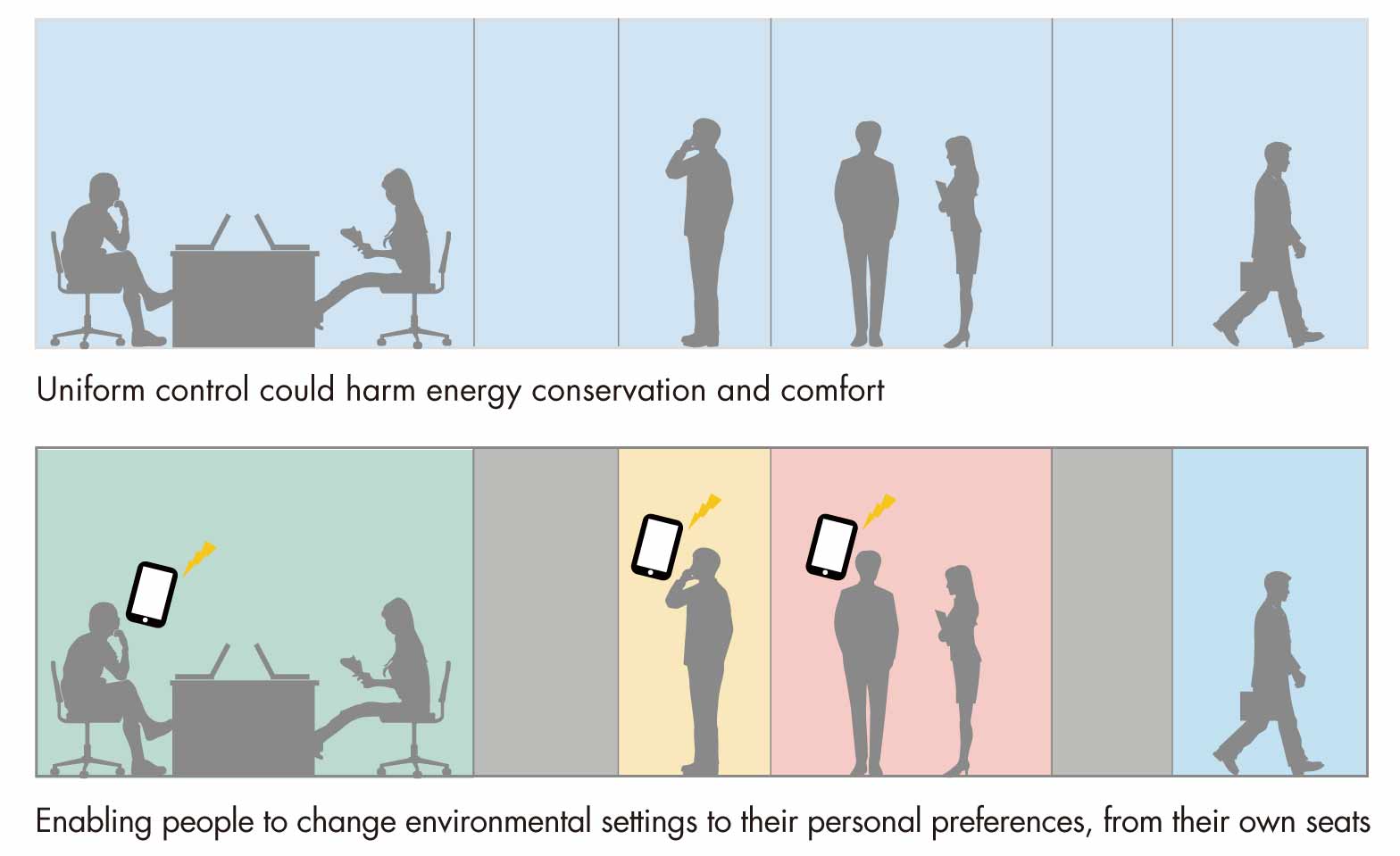
>Enlarge the image
>Kosuke Sato
>Yohei Taniguchi
AI to Control Air Conditioning
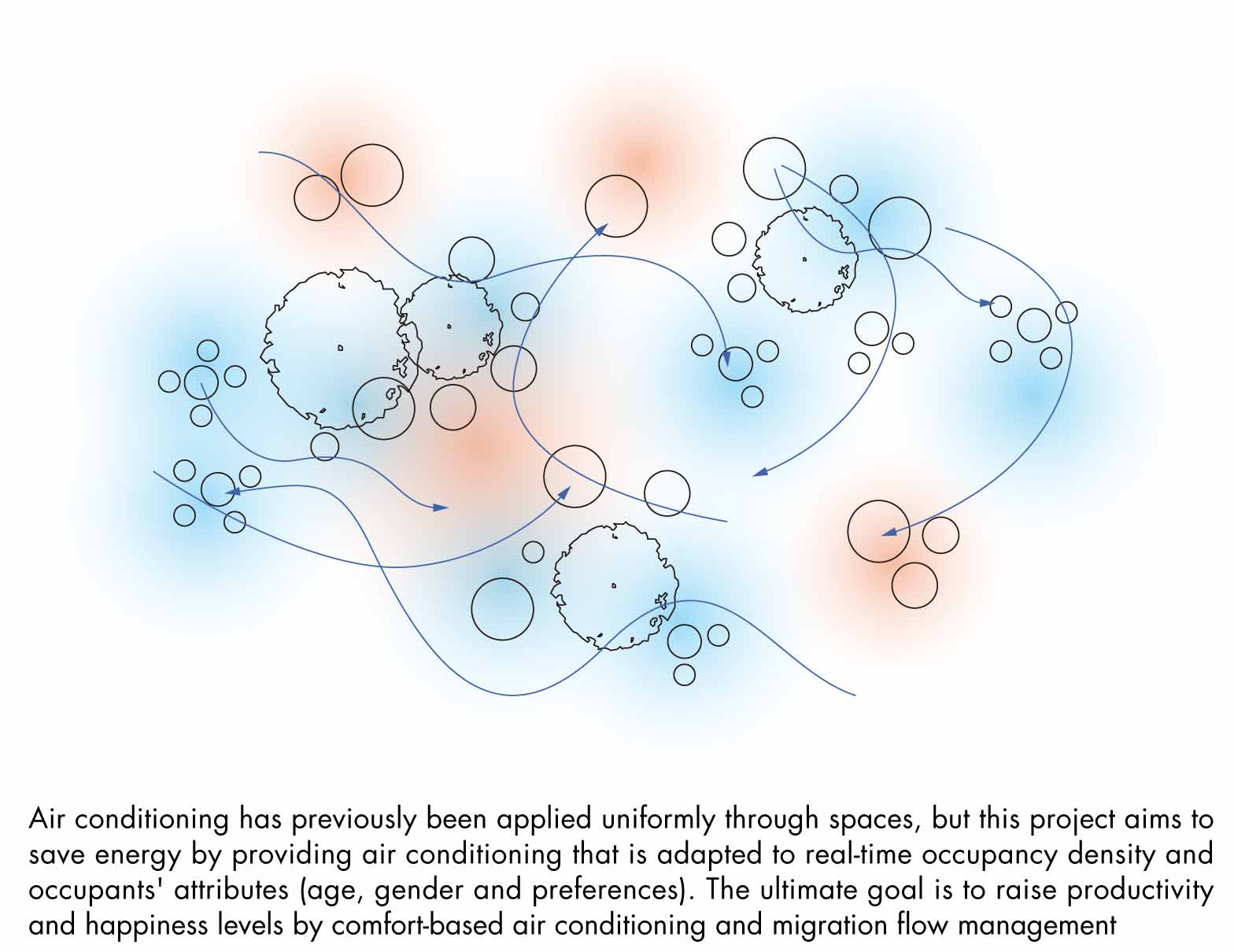
Air conditioning has previously been applied uniformly through spaces, but this project aims to save energy by providing air conditioning that is adapted to real-time occupancy density and occupants' attributes (age, gender and preferences). The ultimate goal is to raise productivity and happiness levels by comfort-based air conditioning and migration flow management
>Enlarge the image
>Masamichi Oura
Technology to Acquire Position Information—Using Bluetooth
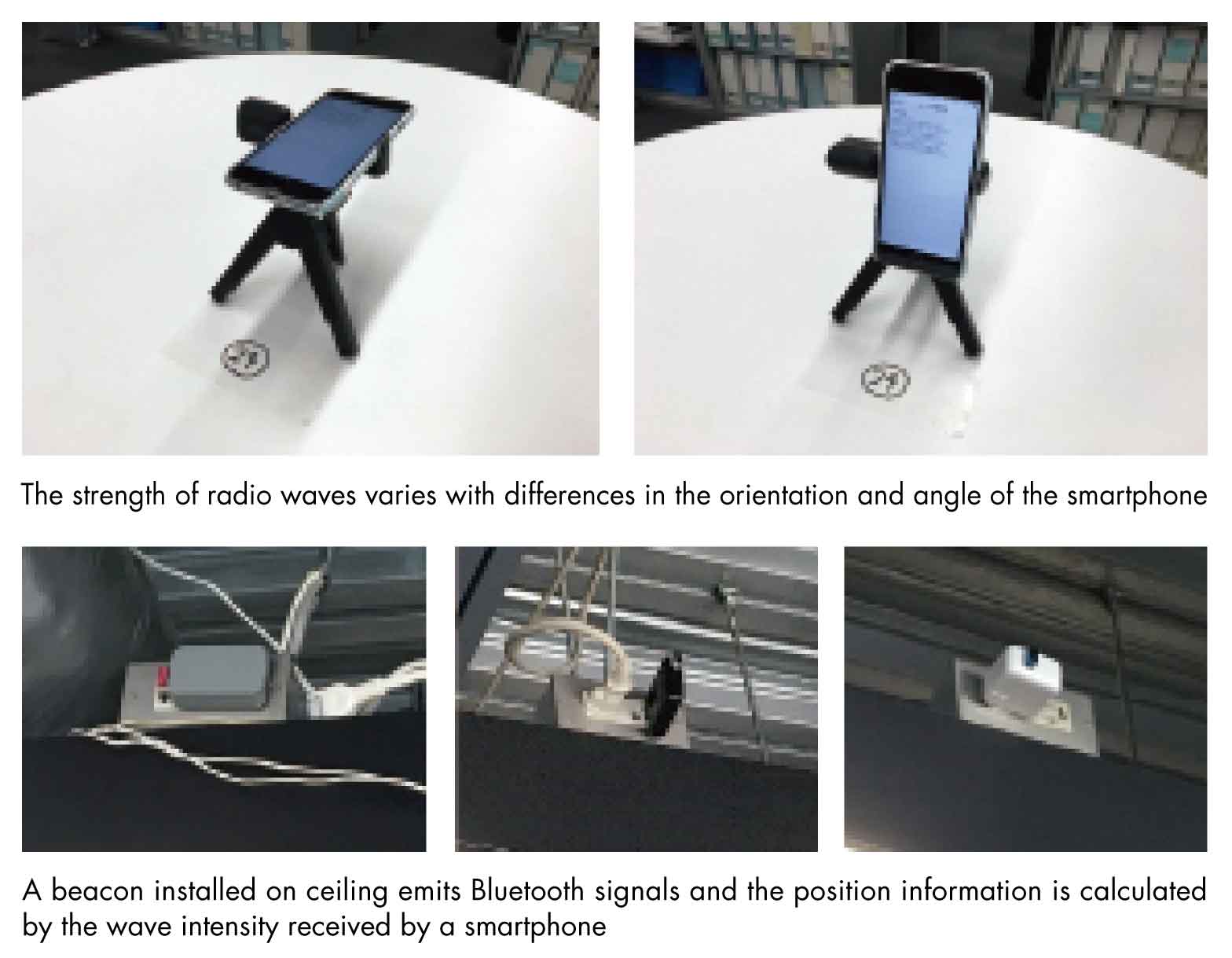
>Enlarge the image
>Yohei Taniguchi
Technology to Acquire Position Information—Using Geomagnetism
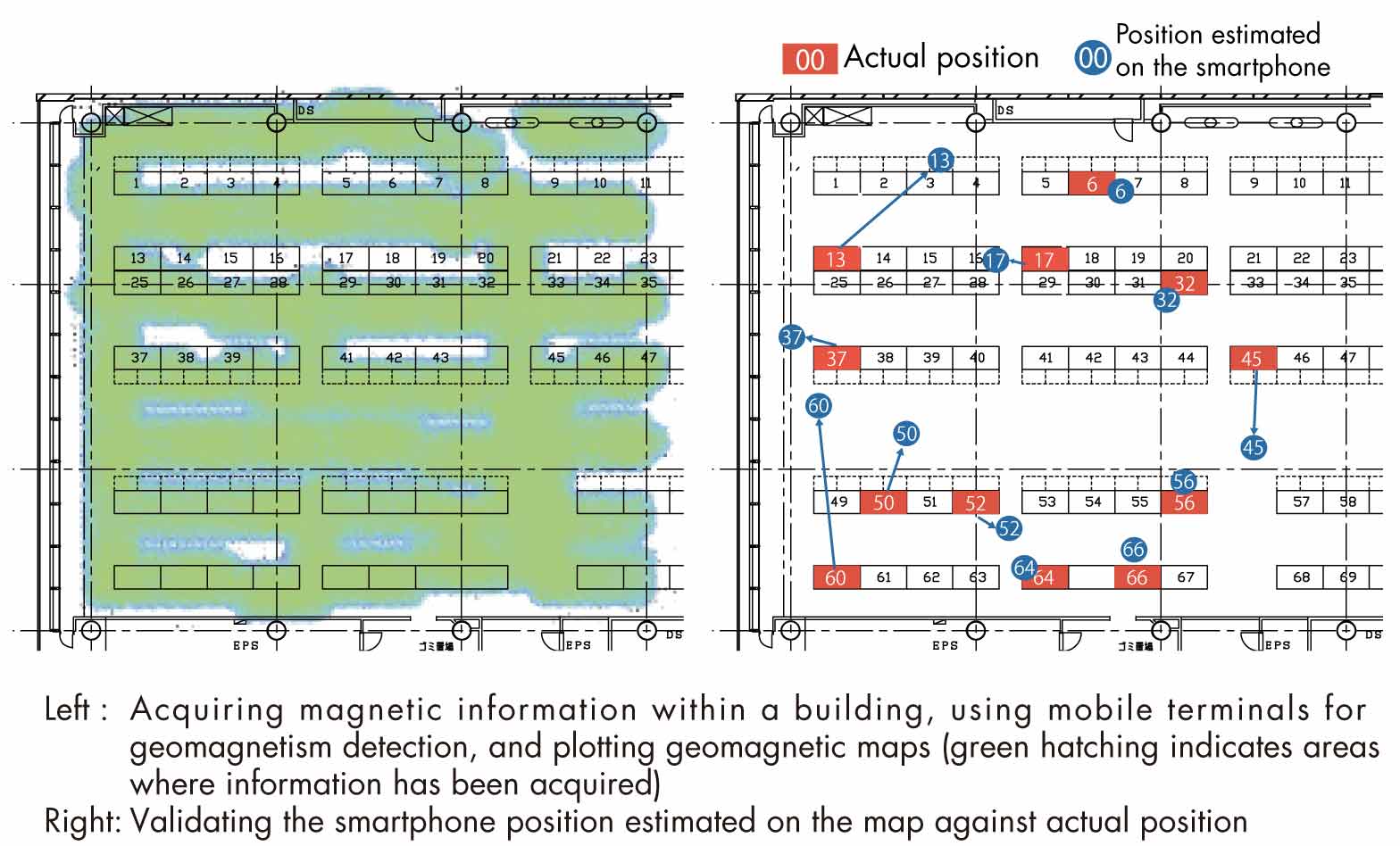
>Shogo Takeda
>Yohei Taniguchi
>Kosuke Yoshida
Thermosensors to Find Numbers of Room Occupants
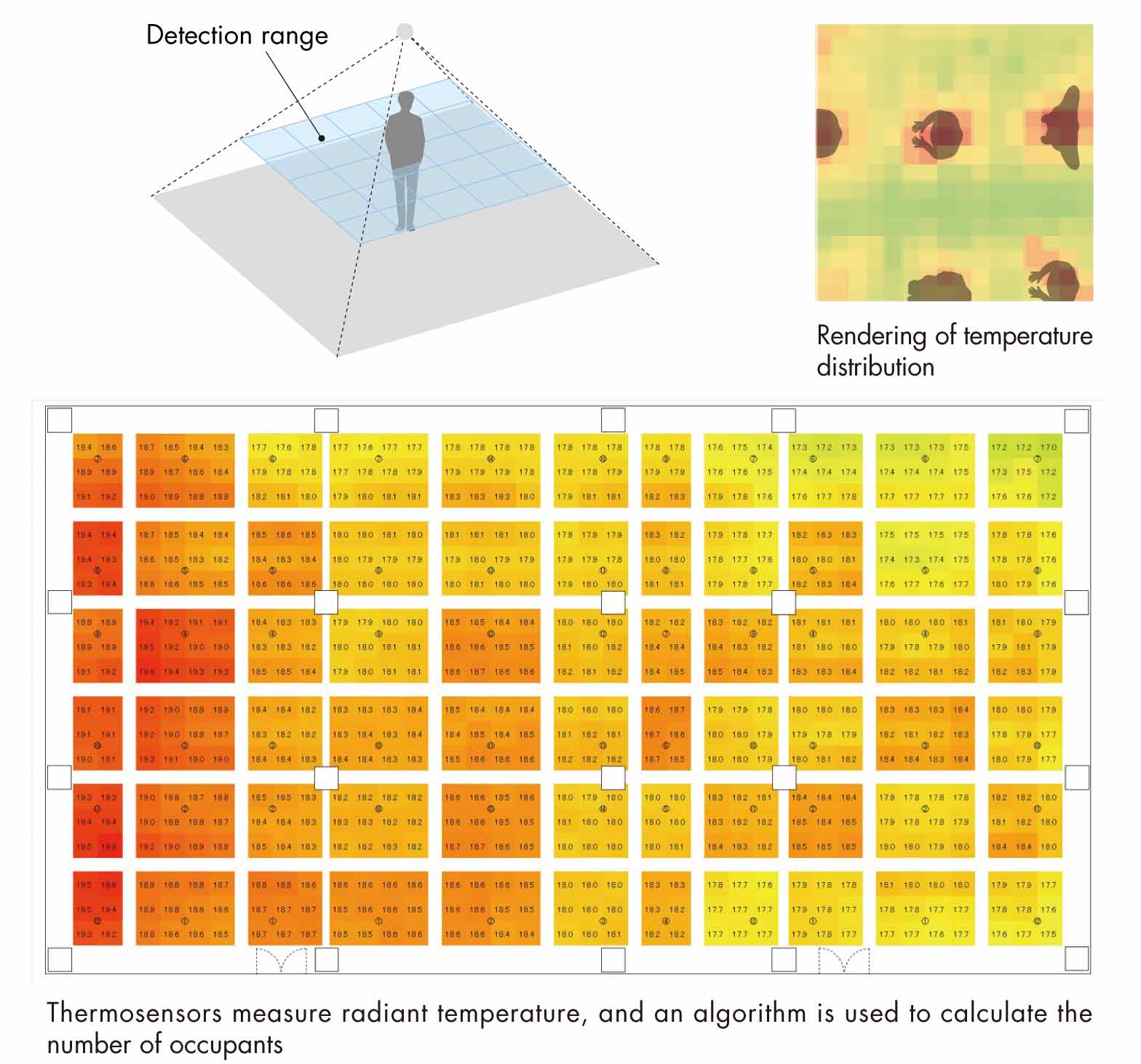
>Enlarge the image
>Hirokazu Nakamura
Visualizing the Vacancy of Lavatory Booths
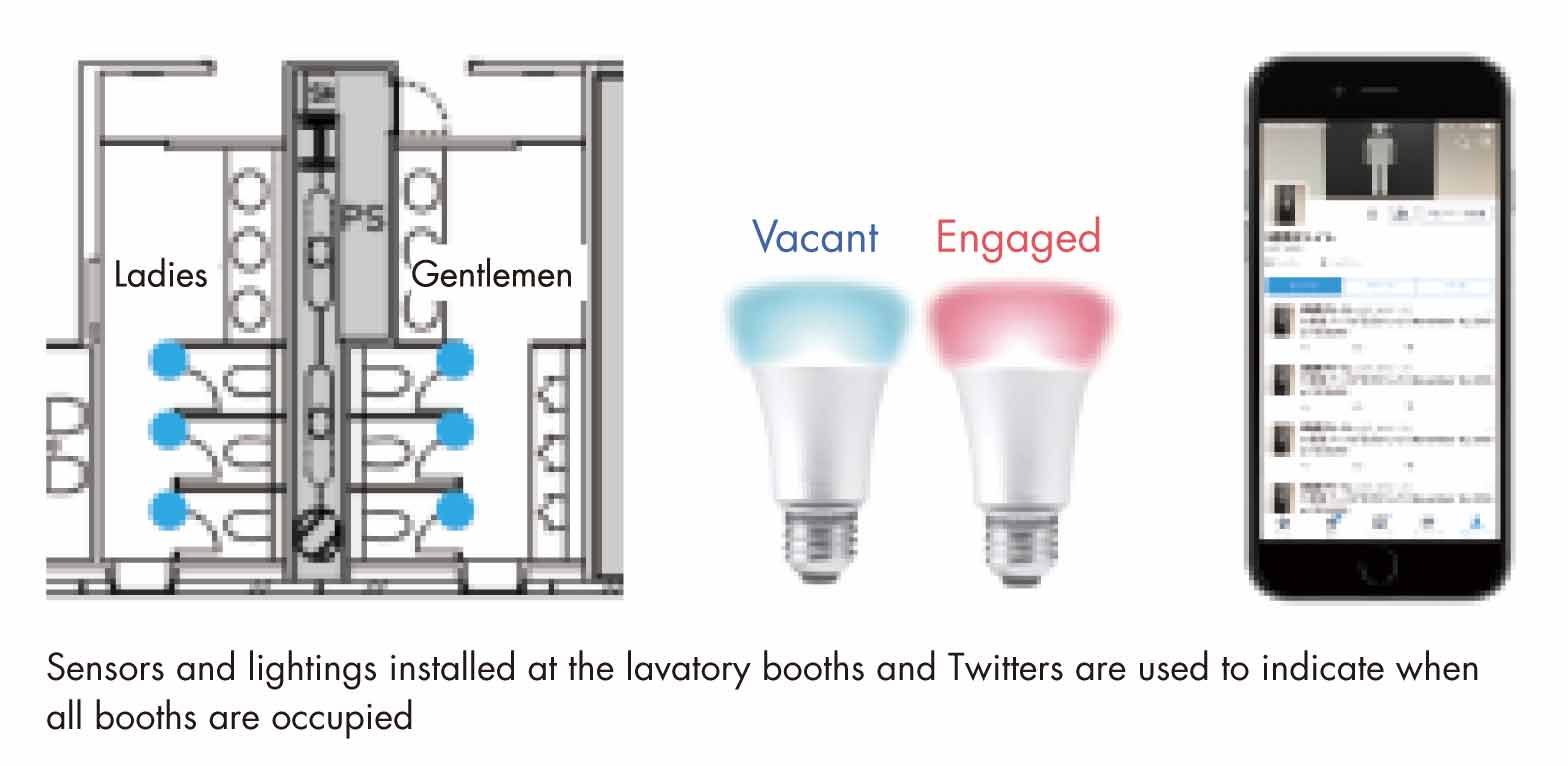
>Enlarge the image
>Kosuke Sato
>Yujin Hirata
Adaptable Lighting Achieves Transformation in the Workplace
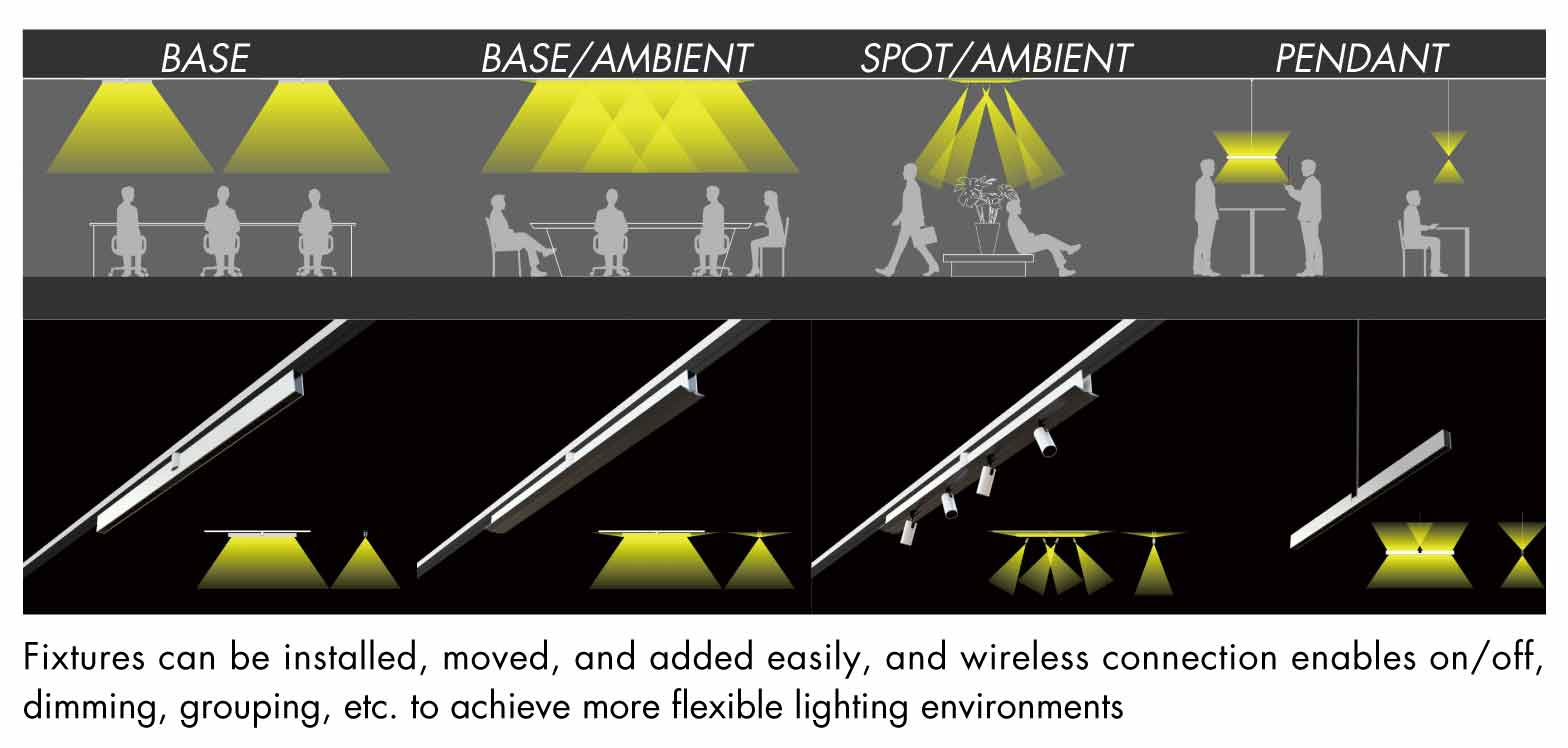
>Enlarge the image
>Takefumi Yokota
>Takaaki Kusuda
Using Smart Outlets to Reduce Power Use in Offices
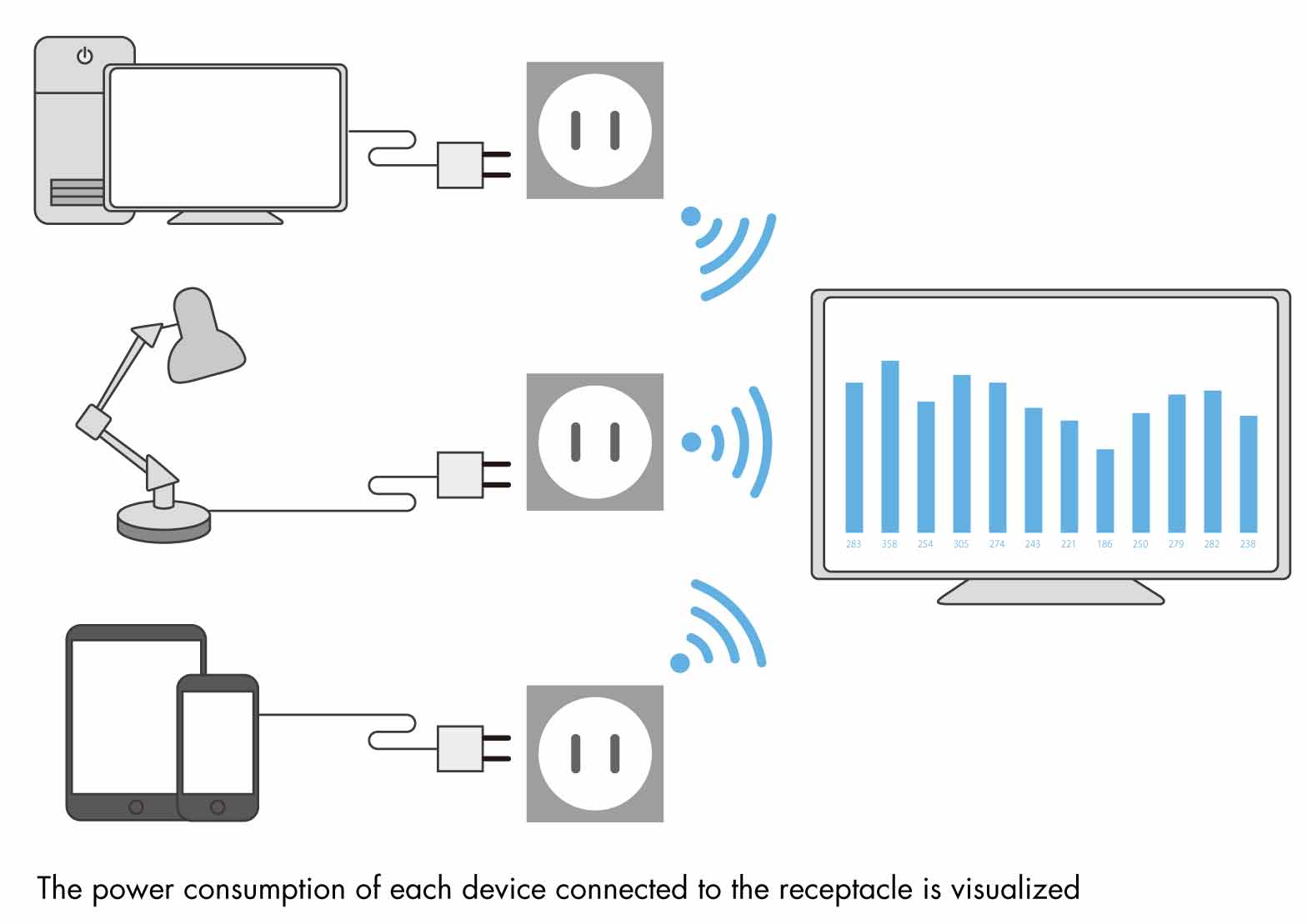
>Enlarge the image
>Mitsuo Kawai
>Yoko Yamagishi